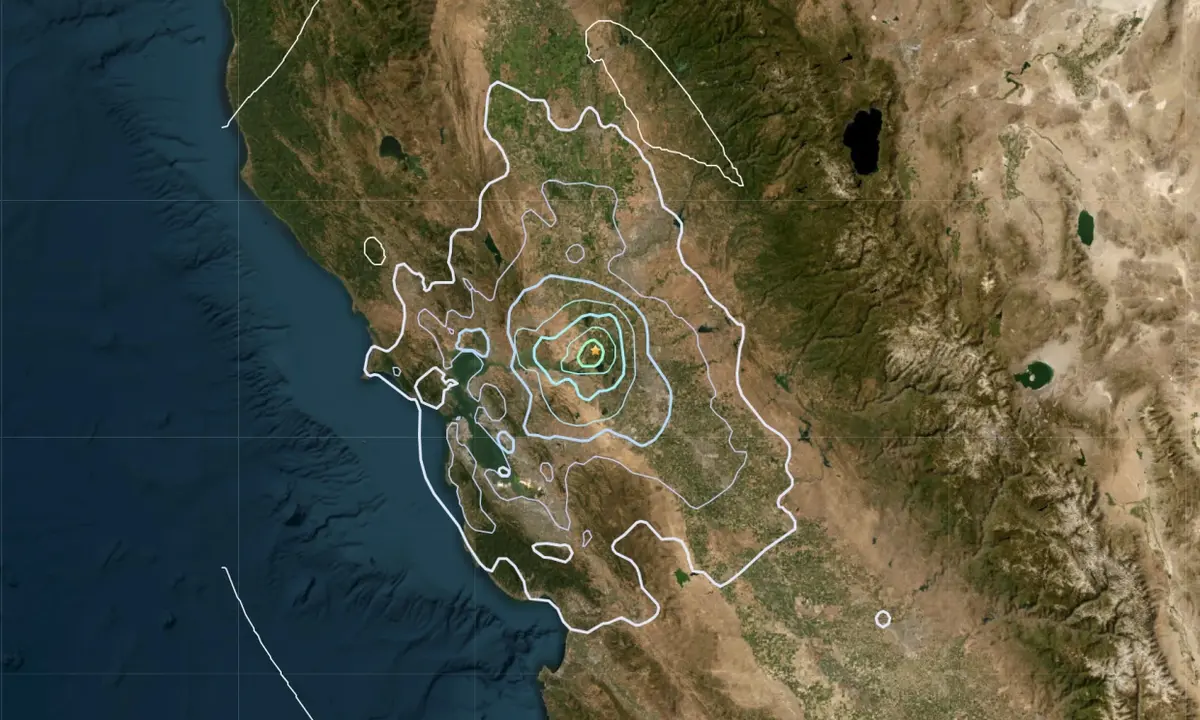In a seismic episode that sent tremors across a vast expanse of Southern California on Wednesday night, a 4.2 magnitude earthquake originating in San Bernardino at precisely 7:43 p.m. startled residents and set off a cascade of discussions on earthquake preparedness. This tremor, pinpointed by the U.S. Geological Survey, triggered light shaking across the Inland Empire, causing ripples of concern in Riverside, Fontana, Rialto, Rancho Cucamonga, Moreno Valley, and Redlands. The Modified Mercalli Intensity Scale defines this level of shaking as akin to the impact of a heavy truck striking a building, leaving residents with a tangible reminder of the region's ever-present seismic activity.
Colton, positioned approximately a mile from the earthquake's epicenter, experienced discernible shaking, yet, remarkably, law enforcement agencies reported no urgent calls for assistance as of 9 p.m. Sgt. Mike Farcas from Colton's police department informed The Times that not a single aid request had been received. This unexpected lack of immediate distress signals reflected the resilience of the communities impacted.
The seismic event, while centered in San Bernardino, extended its influence to weaker shaking in regions as far-reaching as Los Angeles, Long Beach, and Orange County. Reports flooded social media platforms, with residents from various locales, including Ontario, Yorba Linda, and downtown Los Angeles, sharing their firsthand experiences. A resident in Rowland Heights vividly described three seconds of shaking, reminiscent of being on a boat amid rapidly moving waves, illustrating the diverse nature of the quake's impact.
The epicenter, strategically situated 1.5 miles southwest of downtown San Bernardino and merely half a mile north of the San Bernardino Depot train station, added an interesting dimension to the seismic activity. Furthermore, the quake originated just east of the mapped traces of the San Jacinto fault, one of the region's most active and potentially dangerous fault lines.
The San Jacinto fault, spanning about 130 miles from the Cajon Pass in San Bernardino County to the Mexican border, traverses through the middle of the Inland Empire, affecting cities such as San Bernardino, Colton, Moreno Valley, Redlands, Loma Linda, Hemet, and San Jacinto. The proximity of this fault to densely populated areas has long been a source of concern for earthquake scientists.

The Inland Empire, however, is not only characterized by seismic activity but also by its vulnerability due to a lack of seismic retrofitting. A 2018 investigation by The Times revealed the existence of hundreds of old brick buildings in more than a dozen cities in the Inland Empire, including Riverside, Pomona, and San Bernardino. Despite being marked as dangerous, these structures remained unretrofitted, showcasing a concerning gap in infrastructure resilience.
Seismologist Lucy Jones, known for her expertise in earthquake science, offered insights on the depth of Wednesday's earthquake, indicating that it surpassed nine miles. The depth of an earthquake is a crucial factor in understanding its potential impact and aftershock patterns. The latest seismic event occurred about 15 miles southeast of another quake that shook the area on January 5, indicating a region experiencing heightened seismic activity in recent weeks.
As Southern California contends with its first earthquake above magnitude 4 this year, it serves as a stark reminder of the region's geological dynamics. On New Year's Day, a magnitude 4.1 earthquake off the Los Angeles County coast initiated the year's seismic activity. On a broader scale, an average of 25 earthquakes with magnitudes of 4.0 to 5.0 occur annually in California and Nevada, underscoring the region's predisposition to seismic events.
In light of the ongoing seismic activity, it is imperative for residents to stay informed and prepared. The importance of earthquake preparedness cannot be overstated, and initiatives such as the Unshaken newsletter offer valuable insights, breaking down emergency preparedness into manageable steps over six weeks. From earthquake kits to essential apps and Lucy Jones' expert advice, comprehensive resources are available to help communities navigate the seismic landscape.
The seismic landscape of Southern California continues to evolve, with each tremor offering valuable lessons for residents, emergency responders, and scientists alike. As the region navigates the aftermath of this recent earthquake, the imperative remains: Stay informed, stay prepared, and stay unshaken in the face of Mother Nature's unpredictable power.



You must be logged in to post a comment.